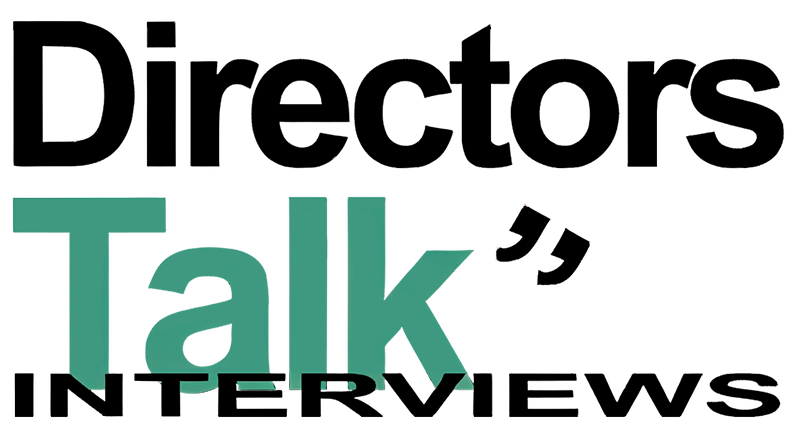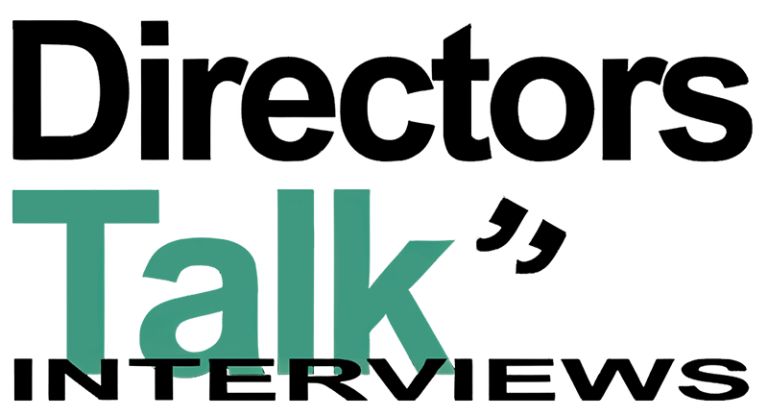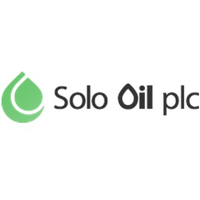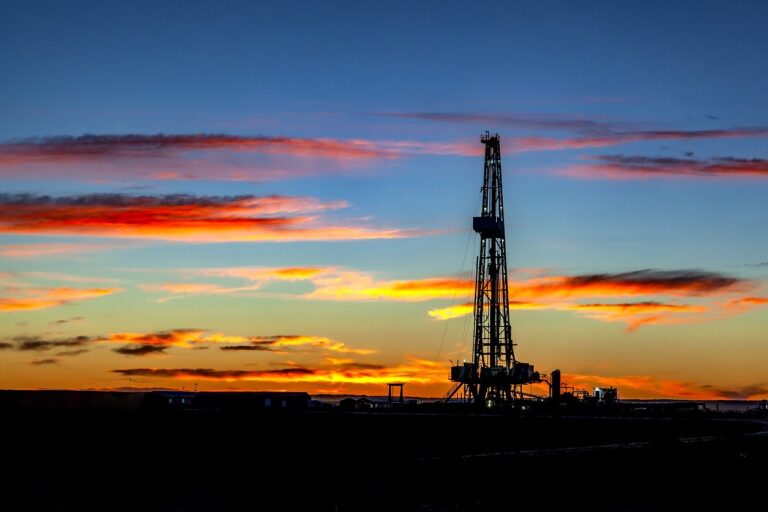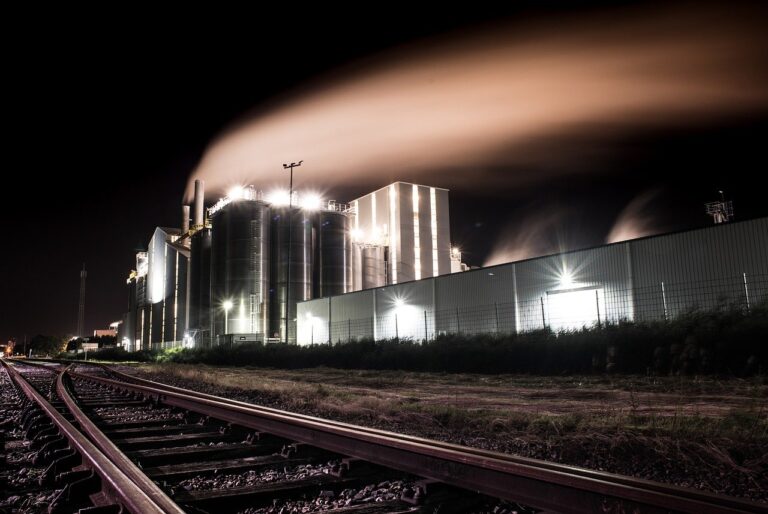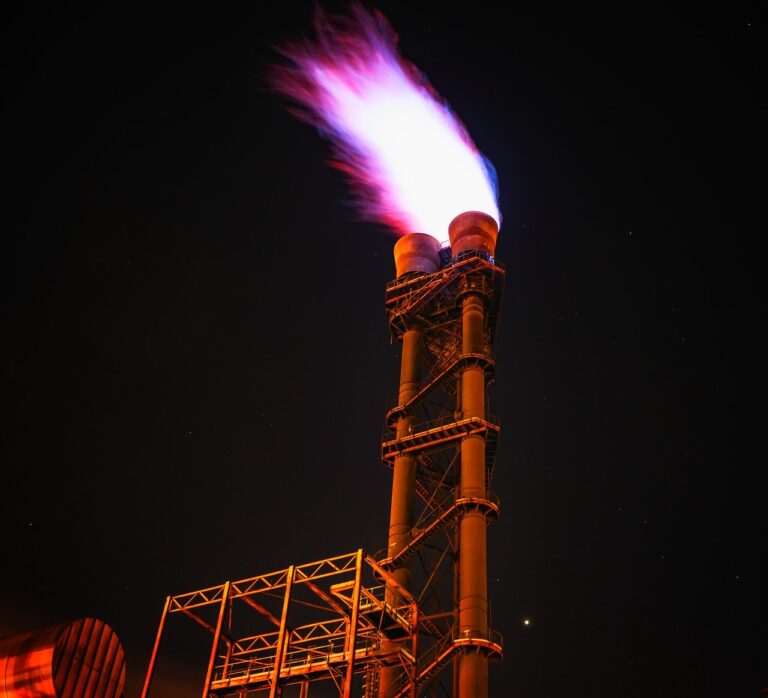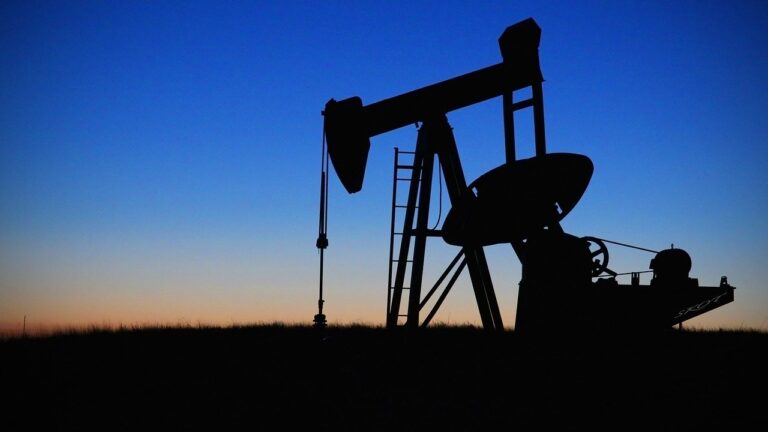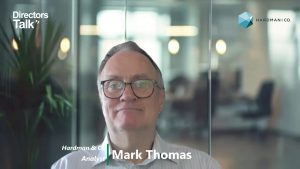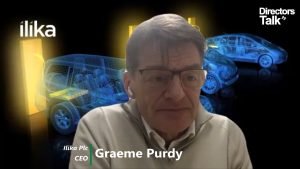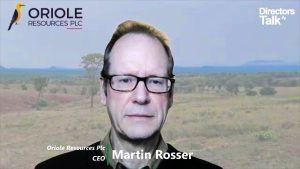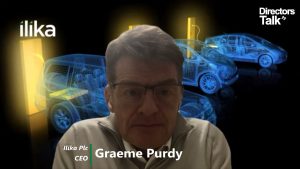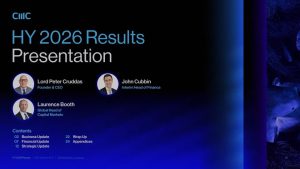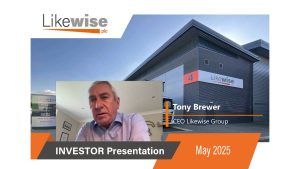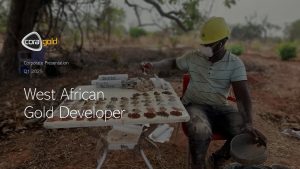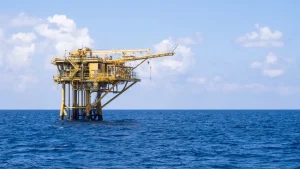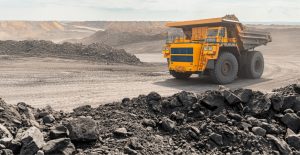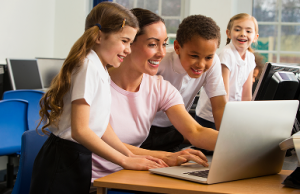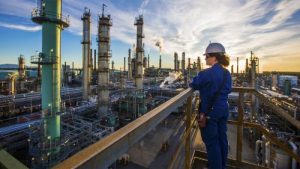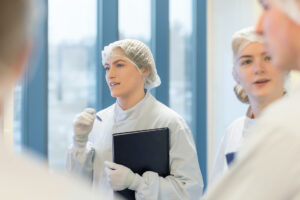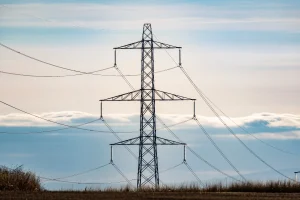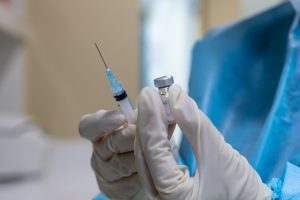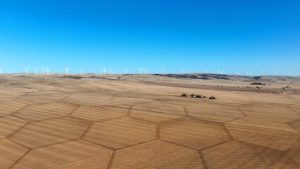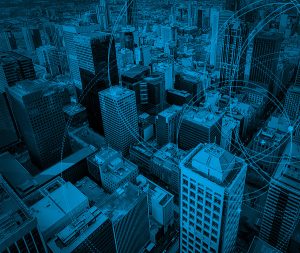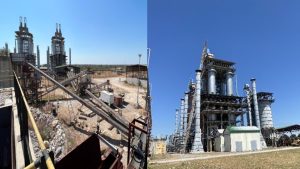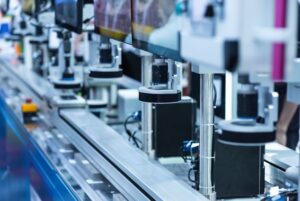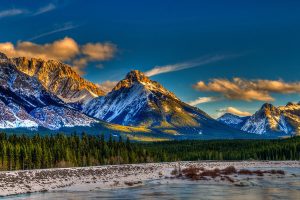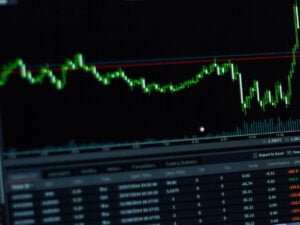Solo Oil plc (LON:SOLO) has today announced that it has published its Annual Report and Accounts for the year ended 31 December 2017, extracts from which are set out below, and which are being posted to Shareholders and will be available on the website www.solooil.co.uk.
The Company’s Notice of Annual General Meeting will be distributed shortly.
Chairman’s Statement incorporating the Strategic Report
Introduction
In 2017 the Company took significant strides towards the strategic commercialisation of certain investments in its portfolio. The Company has invested in long-term exploration onshore in Tanzania which has so far resulted in the discovery of a nationally significant gas field at Ntorya. That asset, which represents the bulk of Solo’s net asset value (“NAV”), is now entering a period of maturity at which its monetisation can be realised. In the UK the Company’s investment in the Horse Hill licences has resulted in the discovery of oil, which with further appraisal, could be of major significance. Other investments, notably the Company’s early stage investment in helium exploration, continue to mature.
Investment Review
During the first half of 2017, successful appraisal drilling and testing at Ntorya-2 (“NT-2”) in Tanzania led to an upgrade in the gross in place gas resources in the Ntorya gas discovery firstly to 1.34 trillion cubic feet (“tcf”) and then with further work completed after the reporting period in February 2018 to 1.87 tcf. These resources have been independently certified by RPS Energy; who attribute 763 billion cubic feet (“bcf”) to most likely gross contingent resources, a ten-fold increase from the prior independent resource assessment carried out in 2015. This step change in resources comes about largely as a direct result of the drilling of the NT-2 well. As a consequence of these substantial resource upgrades and an independent engineering study, conducted by io oil & gas consulting (“IO Consulting”), which demonstrated commerciality for the Ntorya gas discovery, a 25-year development licence was applied for in the third-quarter.
To further appraise the Ntorya gas field and to test a deeper, potentially oil bearing, zone the operator has proposed a further well, Chikumbi-1 (“CH-1”), to be drilled in 2018. The requested 25-year development licence, which envisages an early production scheme (“EPS”) prior to full field development, continues to be reviewed by the Tanzanian authorities and the operator remains confident that the licence will be granted once ongoing discussions have been concluded.
Meanwhile in the UK; the drilling success in several analogous Weald Basin projects has further de-risked the Horse Hill-1 oil discovery where extended well production tests (“EWT”) are now planned prior to a development plan being submitted. Planning permission was granted for these tests and also for the initial phases of any development which could include sidetracking the existing discovery well and the drilling of a new well.
Following the reporting period, Solo elected to acquire a further 5% interest in Horse Hill Development Limited; increasing its stake in the Horse Hill discovery from 7.5 to 9.75%. Resource estimates which include gross 62.5 million barrels oil in place (“OIIP”) in the Portland Sandstone and significant gross most likely oil in place per square mile in the Kimmeridge Limestones will be updated in due course following the planned long-term tests. These in place volumes and the flow rates obtained on short-term test continue to encourage the Company to believe that commerciality will be declared and development will be an attractive opportunity with oil production possibly as early as 2019.
The period also saw the Company invest in a strategic helium exploration project in Tanzania, through Helium One Limited (“Helium One”), where technical studies have been ongoing and an independent report by Netherland, Sewell and Associates Inc. (“NSAI”) issued in 2017 indicated approximately 100 bcf of gross prospective helium resources in prospects and leads that Helium One has under licence in the Rukwa Basin. Helium One’s most mature project area in Tanzania is the Rukwa Basin and there, with technical services support from Solo, Helium One commenced the reprocessing of legacy seismic data in late 2017 with a view to completing a full reinterpretation in 2018, followed by drilling. Excellent prospects for subsurface accumulations of helium exist in the Helium One portfolio and the world market for helium continues to tighten with limited new supplies becoming available and demand continuing to rise. Through its contribution of technical services in 2017 and into 2018 Solo increased its stake in the project from 10 to 15%. Following a pre-IPO funding round in Helium One announced in June 2018 Solo now holds a 13.8% interest in the issued share capital of Helium One.
Gas sales at the Kiliwani North gas field in Tanzania remained strong until November, after which pressure decline led to a sharp drop in output from the Kiliwani North-1 (“KN-1”) well. The operator has investigated both the causes for the loss of pressure as well as options for recovering production and further reserves from KN-1 and has proposed to recomplete the well in an additional productive zone and, in time, to add wellhead compression. That work is expected to be completed in 2018. A gross total of 6.4 bcf were produced from KN-1 in 2016 and 2017, equivalent to an average daily rate of 10 mmscf.
In November 2017 the Company signed a US$5 million financing facility with RiverFort Global Capital Limited (“RiverFort”) to provide working capital and fund operations including the Horse Hill EWT and further appraisal at the Ntorya gas discovery. An initial drawdown of US$1.5 million was made to support cash calls from investee companies, notably at Ntorya, in late 2017 and early 2018.
At end-year the Company’s technical director, Fergus Jenkins, stepped down as an executive director to pursue other interests. Mr Jenkins remained a director until May 2018 when a new non-executive director, Mr Jon Fitzpatrick, joined the Board. Mr Fitzpatrick is a qualified lawyer and an experienced energy sector practitioner with banking and deal structuring experience and his appointment brings skills which complement the existing Board. Following the departure of Mr Jenkins in late 2017 Mr Ritson assumed the role of technical director in addition to his existing duties. Mr Ritson’s remuneration package however remained unchanged.
Closing remarks
Whilst considerable progress was made in 2017 with growing the underlying value and preparing assets within the portfolio for monetisation events; most notably at the Ntorya gas field in Tanzania, and further progress has been made in the first half of 2018, the pace of commercialisation has been slower than was expected. Being a non-operating investment company Solo is reliant on the operators of the assets and is not in control of many of the timelines. Nevertheless the executive management engages in a regular dialogue with the operators of its assets and investee companies with a view to facilitating the acceleration of monetisation and remains confident that substantial further progress will be made throughout 2018 as the Company’s portfolio will undergo a high level of operational activity. At the AGM in early August the Board expects to set out its plans for the balance of 2018 and beyond.
Operational & Financial Review
Highlights for the period include:
Tanzania
• Ntorya-2 (“NT-2”) appraisal well was drilled and successfully flow tested.
• A total 51 metres gross sandstone reservoir section was encountered at NT-2, 74 metres shallower than in Ntorya-1.
• A restricted test flowed 17 mmscfd (“million cubic feet per day”) of gas (equivalent to approximately 2,830 barrels oil per day).
• Unrisked independently assessed gross resource estimates for the Ntorya appraisal area increased to 1.87 tcf Pmean gas in place (“GIIP”).
• Solo has attributable net resources of approximately 468 bcf Pmean GIIP in the Ruvuma Basin, with 191 bcf (31.8 million barrels oil equivalent) of most likely contingent resources (2C) net to its 25% working interest.
• IO Consulting, a Baker Hughes (a GE Company) and McDermott joint venture, completed a gas commercialisation study that indicated that commercial development of the Ntorya field was achievable.
• A development plan for the Ntorya gas field and a request for a 25-year production licence as submitted to the Tanzania Petroleum Development Corporation (“TPDC”) during September.
• Average production from Kiliwani North-1 (“KN-1”) was approximately 10 mmscfd.
• Solo acquired an initial 10% interest in Helium One Limited during the period as an early entry opportunity into an estimated US$6 billion/year global helium market.
• Helium One’s Rukwa Project in Tanzania is independently estimated by NSAI to contain unrisked most likely prospective recoverable helium volumes close to 100 bcf.
United Kingdom
• Surrey County Council approved the planning application submitted in late 2016 for the further development of Horse Hill, including long-term flow tests and further drilling and seismic data acquisition.
• UK Environment Agency has approved the proposed long-term testing of HH-1 and further work as envisaged under the planning application.
• Following the successful testing at Horse Hill-1 (“HH-1”) in 2016 various operators have drilled additional wells in the Kimmeridge Limestone play in the Weald Basin and have demonstrated the widespread occurrence of the play, further supporting the regional significance of the naturally fractured oil bearing reservoir.
• At end-year 2017 plans were in place to commence a 150-day long-term test of the three proven reservoirs in HH-1.
Corporate & Financial
• Revenues from the sale of gas at Kiliwani totaled £0.6m for 2017, up from £0.5m in 2016.
• The Company issued £4.55 million in new equity during the period to pay for Ntorya-2 well testing costs and acquisition of 10% in Helium One.
• Shareholders approved a 20 for 1 consolidation of the Company’s issued share capital.
• The Company signed a US$5 million finance facility arranged by RiverFort Global Capital Limited and made an initial drawdown of US$1.5 million.
• Mr Jenkins relinquished his duties as an executive director in December, remaining a non-executive director until May 2018.
Review of Investments by Country:
Tanzania
Many of Solo’s investments are in Tanzania, a stable democratic republic in East Africa, where gas exploration efforts have been highly successful in recent years. Solo, and its operating partner Aminex plc (“Aminex”), currently produces gas in the Kiliwani North Development Licence on Songo Songo Island. That gas is sold to TPDC under a gas sales agreement signed in 2016 and is used domestically, contributing to the development of the local energy market in Tanzania.
Gas produced and used in Tanzania is largely unaffected by issues that have arisen with resources destined for export following changes in the legislation regarding hydrocarbon and mining law recently announced by the Tanzanian government. The nationally significant onshore Ntorya gas discovery made by Solo and Aminex is expected to be developed solely for local consumption and therefore is expected to continue to have TPDC’s full support as Tanzania seeks to grow its indigenous energy provision.
In April 2018, the government of Tanzania established a new Mining Commission to regulate and implement the provisions of the Mining Act. The Commission is required to approve the grant of new licences and approve contracts. The establishment of the Commission and publishing of the new Mining Regulations is timely for Solo’s Helium One investment with drilling expected to commence this year, and an application for a Mining Licence following drilling success. The industrial gas royalty remains at 3%, however, a 16% carry for the government and a 1% inspection fee are both now set in law.
A. Ruvuma Basin (25% interest)
In 2017 Solo held a 25% working interest in the Ruvuma Petroleum Sharing Agreement (“Ruvuma PSA”) in the south-east of Tanzania covering an area of 3,447 square kilometres of which approximately 90% lies onshore and the balance offshore. The Ruvuma PSA is in a region of southern Tanzania where very substantial gas discoveries have been made offshore in recent years and where gas has also been discovered onshore and along the coastal islands at Ntorya, Mnazi Bay, Kiliwani North and Songo-Songo.
The Ruvuma PSA comprised two licence areas: the southern Mtwara Licence (“Mtwara”) and the northern Lindi Licence (“Lindi”). The Ntorya Appraisal area and proposed Development Licence lies exclusively in the Mtwara Licence. As well as the Ntorya wells, several further prospects in the Ruvuma acreage have been identified from the 2014/2015 mapping, including potential prospects such as at Likonde and Namisange. Ministerial approval was obtained for an extension to Mtwara to December 2017 and the operator has also applied for a further two-year extension which is expected to be approved in 2018. In order to focus the Joint Ventures resources on the development of the Ntorya gas field and its surrounding area it has now been agreed that the Lindi Licence will be relinquished and will become the subject of a future application for a new PSA by TPDC with the option of Aminex and Solo participation once terms have been agreed. There are no penalties for the relinquishment of Lindi and the Company believes that this decision to focus on Ntorya represents the most effective means to deploy resources, as it limits further exploration spending in favour of the appraisal and development of proven resources.
The Ntorya gas-condensate discovery, made in 2012 and operated by Aminex, represents the most immediate commercialisation opportunity in the Ruvuma PSA. The Ntorya-1 (“NT-1”) well was flowed over a 3.5-metre zone at the top of the gross 25-metre gas bearing interval at a maximum gross flow rate of 20.1 mmscfd and 139 bpd of 53 degree API condensate through a 1-inch choke. That well is suspended as a discovery for subsequent additional testing or production.
Based on an infill 2D seismic programme around NT-1 a re-estimation of the discovered and prospective resources in the Likonde-Ntorya area was made and subsequently audited by LR Senergy who issued a CPR in May 2015. LR Senergy estimated that Ntorya contained a gross 153 bcf of proven gas in place, of which they attributed a gross 70 bcf as best estimate contingent resources (2C).
In order to further appraise the Ntorya gas and condensate discovery made in the NT-1 well it was decided to drill an up-dip well, Ntorya-2 (“NT-2”), at a location approximately 1.5 kilometres east of the discovery well. The location was prepared in late 2016 and the Caroil-2 rig was moved onto the site in December and the well spudded on 21 December 2016.
During early 2017 drilling continued on prognosis with 17-inch casing set at 1,326 metres in early January and the well reached the anticipated reservoir section at a depth of 2,593 metres in early February 2017. A gross gas bearing sandstone reservoir interval of 51 metres thickness was encountered and the well was deepened to a final total depth of 2,795 metres, with a 7-inch liner set prior to testing. A 34-metre interval of the gross reservoir was perforated and flowed dry gas at a stabilised rate of 17 mmscfd through a 40/64-inch choke. Analysis of the well during testing and interpretation of electric logs strongly suggests that high mud weights, used to control gas influx during drilling, had caused a degree of formation damage around the well bore and these effects were reducing the test flows. Remedial operations prior to production could be undertaken to target higher flow rates.
As a result of the new data from NT-2 and a reassessment of all available data, including a new seismic interpretation, the gross most likely in place gas in the Ntorya discovery was increased in September 2017 by some 9-fold from 153 bcf in the LR Senergy report in May 2015 to 1,344 bcf. The Company being fully satisfied that such volumes, now discovered, are commercially exploitable. As a result the operator applied for a 25-year development licence covering the entire Ntorya field area in September 2017.
Further work in 2018 by RPS Energy Consultants Limited (“RPS”), on the resource estimates, and by IO Consulting, on the development engineering and economics, has led to a further upgrade of the resource estimates (Table 1) which now include independent 2C estimates of gross contingent resources of 763 bcf, of which 191 bcf would be net to Solo’s working interest, equivalent to approximately 31.8 mmbbls oil equivalent.
|
|
Gas Contingent Resources (bcf) |
|||||||||
|
Gross (100%) Licence Basis |
Solo’s Net 25% Working Interest Basis |
Solo’s Net Entitlement Basis |
||||||||
|
1C |
2C |
3C |
1C |
2C |
3C |
1C |
2C |
3C |
|
|
|
Development Pending Category |
25.5 |
80.6 |
212.9 |
6.4 |
20.1 |
53.2 |
5.4 |
25.8 |
41.1 |
|
|
Development Unclarified Category |
342.3 |
682.2 |
949.5 |
85.6 |
170.5 |
237.4 |
65.0 |
117.9 |
155.2 |
|
|
Total Contingent Resources |
367.8 |
762.8 |
1162.4 |
92.0 |
190.6 |
290.6 |
70.4 |
143.7 |
196.3 |
|
Source: RPS Energy
Once a development licence has been awarded, Solo and Aminex will carry out an approved work programme, yet to be agreed with the Tanzanian authorities, which may potentially include 3D seismic acquisition and further drilling. A well designed to further appraise the Ntorya gas field at the previously proposed Ntorya-3 location has been designated an exploration well as it will additionally test a deeper Jurassic age target to an estimated total depth of 3,400 metres. Due to the exploration target of the well it has been renamed Chikumbi-1 (“CH-1”). Rig tending was underway in April 2018 and it is hoped that the well can be spudded in 2018 once the Mtwara Licence has been extended for a further period as envisaged.
Under the terms of the Ruvuma PSA, after the approval of a development plan, TPDC may elect to contribute 15% of development costs in order to obtain a participating interest of 15% in production and revenues.
Solo is actively assessing its options with regards to its future participation in the project. Consideration is being given to options for further proportionate investment, project financing of an early production scheme, a possible farm-down, or sale of some or all of its 25% interest in the discovery in order to monetise its investment in the Ruvuma PSC and return funds to the Company to deploy elsewhere. A final decision on the future investment scenario will be taken when the terms of the 25-year development licence are known. The potential farm-down of the operator’s interest, which is reported to be under discussion, will also impact on the timing and chosen route to Solo’s monetisation.
B. Kiliwani North (7.55% interest)
In 2014, Solo agreed with Aminex to acquire up to a 13% working interest in the Kiliwani North Development Licence (“KNDL”) on Songo-Songo Island. The Kiliwani North-1 (“KN-1”) well was drilled by Aminex and its partners in 2008 and discovered gas in a 60-metre column in the Lower Cretaceous. Solo acquired an initial 6.5% interest in the KNDL project for US$3.5 million in 2015 and subsequently announced its intention to increase its stake to up to 10% through the acquisition of three additional tranches of project equity linked to project milestones at the Company’s option.
The condition precedent for further acquisition of project equity by Solo was the signature of a gas sales agreement (“GSA”), which was achieved in January 2016. The subsequently agreed tranche milestones were the commencement of gas production, which was achieved in April 2016, the receipt of first cash revenue and the declaration of commercial (post-commissioning) gas production under the take-or-pay arrangements of the GSA. Once the first of these milestones was reached Solo increased its direct participation to 7.55%. Since production has continued in 2016 and 2017 under the commissioning terms of the Kiliwani North GSA further tranches of investment in the acquisition have not been made and Solo and Aminex have mutually agreed to the termination of their agreement. Solo continues to hold a 7.55% working interest in the KNDL, although TPDC has a back-in right to take up an interest in the KNDL which would reduce Solo’s interest to 7.175%. To date TPDC have not taken up that option.
The GSA signed with TPDC for KNDL gas contains payment guarantees in US Dollars and is linked to a price escalation formula commencing at US$3.00 per million British Thermal Units (“mmBTU”) and rising from January 2016. Following commissioning KN-1 was produced at a rate of roughly 15 mmscfd being the call on gas being made by TPDC. Overall gas market development continues to lag supply in Tanzania, however, this is expected to gradually change to a supply shortage in future years as new power projects and industrial usage increases. Due to a higher than specified calorific value for the gas and an advantageous effect of the sales contract’s indexation allowance, gas has been sold during the reporting period at approximately US$3.27 per mcf.
Production from the KN-1 well declined sharply in late 2017 due to pressure loss and associated water influx to the wellbore. The operator has investigated options for recovering production and further reserves from KN-1 and has proposed to recomplete the well in an additional productive zone and in due course to add wellhead compression. An update from the Operator is expected pending further work on plant specifications and appropriate government approvals. A gross total of 6.4 bcf were produced from KN-1 in 2016 and 2017, equivalent to an average daily rate of 10 mmscf.
A resource report by LR Senergy, completed in May 2015, attributed approximately 28 bcf gross best estimate contingent resource to the Kiliwani North field. These estimates were revisited by RPS in 2018 following production over an 18 month period totaling approximately 6.4 bcf. A new Pmean GIIP of 30.8 bcf and a remaining reserve gross 2P reserves of 1.94 bcf. It is felt that with further intervention additional gas can be recovered from the KN-1 well and an additional 57 bcf prospective Pmean GIIP feature, Kiliwani South, has been identified in the licence that may merit future drilling after some additional work is undertaken.
C. Helium One (13.8% interest)
Solo entered into a sale and purchase agreement with Helium One Limited (“Helium One”) to acquire an initial 10% stake in Helium One with an option to acquire a further 10% stake. Helium One owns exploration licences in a number of highly prospective, and extremely rare, helium properties in Tanzania. Netherland & Sewell Associates International (“NSAI”) has independently assessed the most mature of the projects, in the Rukwa Basin of the East African Rift Valley, as having the gross potential for close to 100 bcf of helium in place.
With current world helium demand of approximately 6 bcf per annum the Rukwa project represents a potentially material contribution to future helium supply. World helium demand has been growing at a rate of about 3 per cent per annum over the last decade and is a vital component of many modern technologies, for example in Magnetic Resonance Imaging (“MRI”) devices used in modern medicine. As a result of its unique properties as a super fluid, it plays a vital role in devices which use super conducting magnets; as in MRI machines. As an inert gas helium also plays a vital role in the production of many critical electronic components such as disk drives and fibre optics, and is additionally used for industrial testing, purging and leak detection. Helium, as a lifting gas in hybrid air vehicles (and other forms of airship), has also begun to have increased significance. Though relatively abundant in the earth’s atmosphere, helium is lighter than air and is progressively being lost to space and on many applications is extremely difficult to recycle effectively.
The current global supply of helium comes from several large deposits in the USA and as an impurity removed from hydrocarbon gas in a number of major liquefied natural gas (“LNG”) projects such as in Qatar and Algeria. However, the US government has been selling its strategic reserve and will close the facility for international sales no later than September 2021, after which there is projected to be a significant shortage of helium available on world markets. In June 2017, several countries abruptly cut diplomatic relations with Qatar and imposed trade and travel bans. The ramifications for global helium supply were significant, with both Qatari plants being turned off for a period, as exports of helium were unable to pass the trade barriers imposed on Qatar. While only a temporary situation, it did highlight the fragility of the helium supply chain, and reliance on Qatari supplies. It should also be noted that helium output from LNG plants can only be increased if LNG demand also increases and as a result much of the global helium supply is highly illiquid. Helium One holds one of the only known large, high-volume, standalone helium resource projects being developed globally and, if successful, could provide much needed stability to global helium supply. Helium One’s projects are not associated with hydrocarbon gases and therefore, if commercial volumes are discovered, could be produced as a major swing producer to global markets.
The Helium One Tanzania projects have excellent supply economics and, once liquefied close to production well sites, the helium could be transported to world markets via the deep-water port at Dar es Salaam. Given the competitive demand for crude helium on world markets Solo and Helium One would expect to sell helium at the wellhead through an off-take agreement with a large industrial gas company who would liquefy and transport the helium to market. With weak supply-demand fundamentals helium prices, which are currently in the range US$200-260 per million cubic feet (for pure liquid helium), have been rising in 2017/2018 and are expected to continue to rise until significant new supplies are commercialized.
Originally identified by means of helium macro-seeps the prospects under investigation by Helium One have been mapped using soil geochemistry anomalies, airborne geophysical tools and on legacy 2D seismic data acquired previously during failed hydrocarbon exploration in the 1980s. The identified macro-seepage indicates high concentrations of helium (up to in excess of 10% by volume) in association with nitrogen that may be trapped in the subsurface. In late 2017, with technical support and backing from Solo, Helium One commenced a seismic reprocessing project on the 2D legacy seismic intended to lead to a full reinterpretation and prior to the selection and drilling of the initial exploration wells.
Helium One announced in June 2018 that the reinterpretation was nearing completion and that it confirmed previous estimated of helium resources in the Rukwa Basin. Prospects ready for drilling have been identified and Helium One have indicated they are in negotiations for the provision of a drilling rig and services. The drilling of initial test wells is anticipated to occur in late 2018 or early 2019 depending on the availability of rigs and finance.
Solo completed its acquisition of an initial 10% interest in Helium One on 22 March 2017 through the payment of £1.2 million in cash and the issue to Helium One of 236,842,105 (pre-consolidation) shares at an issue price of 0.54p in Solo Oil plc (10.8p post consolidation). As initial market reaction to the proposed projects was muted the decision was taken not to exercise the option to increase Solo’s investment to 20% and the option granted in the March sale and purchase agreement was allowed to lapse.
Since Solo’s initial investment, Helium One have been focusing on evolving its subsurface technical data set and preparing its prospect database ready for possible drilling in 2018. Subsequent to period end Helium One have also been made to start to reprocess the existing legacy 2D seismic data with Solo’s technical assistance. In return for the technical assistance provided, especially in regard to seismic reprocessing, Helium One has issued additional equity to Solo in 2018 up to a 15% stake in Helium One. In June 2018 Helium One closed a US$2.0 million pre-IPO funding round providing the necessary funding of the Rukwa project up to drilling. As a consequence of the issue of new shares Solo’s interest in Helium One is now 13.8%; which at the pre-IPO valuation is worth £2.84 million, an 11% increase over the purchase price in 2017.
United Kingdom
Solo’s principal investments to date in the UK have been in the Weald Basin, south of London, where the Horse Hill-1 well (“HH-1”) was drilled and identified a thick section of oil bearing naturally fractured Kimmeridge Limestones in addition to an oil bearing Portland Sandstone section. A well drilled recently at Broadford Bridge (“BB-1”) and a subsequent side-track, BB-1z, some 30 kilometres to the southwest of HH-1, has revealed the continuation of similar naturally fractured and oil saturated Kimmeridgian age limestones and shales as were seen at HH-1. Similar Kimmeridge lithologies have also been reported at Brockham and Balcombe in the Weald Basin suggesting the play is regionally extensive. Logs and cores from the BB-1/1z well, as reported by the operator, show extensive natural fracturing throughout the entire Kimmeridge section, including a previously unidentified potential oil bearing fracture-zone below the previously seen oldest Kimmeridge Limestone, KL1, now designated KL0. These results indicate a possible gross vertical thickness of the Kimmeridge continuous oil deposit of up to around 1,200 feet. Solo remains confident that with additional drilling a regionally significant new oil play will be realised.
A. Horse Hill, Weald Basin (9.75% interest)
In 2014, the Company acquired a 10% interest in a special purpose company, Horse Hill Developments Limited (“HHDL”), which became the operator and 65% interest holder in two Petroleum Exploration and Development Licences, PEDL 137 and 246, in the northern Weald Basin between Gatwick Airport and London. PEDL 137 covers 99.29 square kilometres (24,525 acres) to the north of Gatwick Airport in Surrey. PEDL 246 covers an area of 43.58 square kilometres (10,769 acres) and lies immediately adjacent and to the east of PEDL 137.
The HH-1 well commenced drilling operations in September 2014 and reached total depth at 8,870 feet MD in November 2014. Evaluation of electric logs and other data collected from the well resulted in the announcement on 24 October 2014 of a conventional Upper Portlandian Sandstone oil discovery. Subsequent analysis of the Kimmeridge, Oxfordian and Liassic sections in the well indicated that there was also substantial in place oil in the naturally fractured Kimmeridge Limestones and associated mudstones.
Approval for the testing of all three oil bearing zones was granted in late 2015 and the tests commenced in early February 2016. Tests lead to naturally flowing oil rates of the Kimmeridge Limestones at a gross rate of 460 bopd from the Lower (KL3) interval and 900 bopd from the upper (KL4) interval. The Portland Sandstone was placed on pump to stimulate flow and achieved a maximum gross stable rate in excess of 320 bopd. These flow rates substantially exceeded the expectations for the well and rank alongside some of the highest rates ever achieved on test for any UK onshore well.
Following the testing of the Portland Sandstone, where higher productivity and a lower than expected water cut were observed, further analysis on the electric logs has led to a 3-fold increase in the anticipated gross oil in place at this stratigraphic level. Previous estimates of oil in place within the Portland Sandstone were 7.7 mmbbls per square mile and were increased to 22.9 mmbbls per square mile. Based on estimates by Xodus in 2017 this would increase the overall gross oil in place within the Horse Hill Portlandian discovery to approximately 32 million barrels of oil (“mmbbls”).
The relevant licences have been extended to permit further work and HHDL has been granted planning consent by Surrey County Council (“SCC”) for an extended well test (“EWT”) and additional appraisal work that includes 3D seismic and further drilling. In September 2017 the Environment Agency granted the necessary permits to HHDL to carry out extended well tests, drill a side-track well from the existing HH-1 and drill and test a new borehole at the HH-1 site.
In December 2017 HHDL announced its plans for a 150-day EWT program aimed at confirming commerciality of the Portland and Kimmeridge discoveries and, if successful, to commence a further well in late 2018 with a view to commencing permanent oil production in 2019. Equipment for the proposed EWT was procured and testing is anticipated to commence after receipt of all relevant consents, including the Oil & Gas Authority (“OGA”). Each of the three zones; Portland, KL3 and KL4, would be tested for a duration of 30 to 40 days consisting of a series of stabilised steady state flow and shut-in periods designed to establish the oil in place in contact with the wellbore.
In 2018 Solo acquired a further 5% interest in HHDL in a sale and purchase agreement with Primorus Investments plc, increasing its working interest in the Horse Hill licences to 9.75%. Solo paid the equivalent of £200,000 per percent for the additional HHDL interest paid partly in cash and partly in Solo shares.
The OGA granted final approval for the EWT in mid-June 2018 and HHDL indicated that test operations were underway on the 27 June 2018.
B. Isle of Wight, PEDL 331 (30% interest)
An application was made jointly with UK Oil and Gas Investments plc (“UKOG”) for a 200 square kilometre onshore block in the south and central portion of the Isle of Wight in the UK 14th Landward Licensing Round. Solo holds a 30% working interest in the joint venture and in the licence, PEDL 331.
Based on work by UKOG, and confirmed by independent work by Solo, Arreton-2, originally drilled in 1974 by the Gas Council, but never tested, is now considered to be an oil discovery on the Arreton Main Field. When taken together with the adjacent prospects Xodus has calculated a P50 gross oil in place estimate of 219 mmbbls in conventional reservoirs within the Purbeck, Portland and Inferior Oolite limestone reservoirs at Arreton. Arreton Main is considered by Xodus to contain most likely (P50) contingent resource net to Solo’s interest in PEDL 331 of 4.7 mmbbls.
UKOG has become operator of PEDL 331 and has commenced discussions with the local planning authorities and land owners and expects to seek regulatory consents to appraise the Arreton Main oil discovery in the coming years.
Other investments
The Company holds several other investments that remain under active review, but have had only minimal expenditure in the reporting period.
A. Burj Africa, Nigeria, West Africa (20% interest)
Between 2013 and 2015 Solo made an investment into various ventures aimed at accessing known reserves in fields in Nigeria. These have resulted in a 20% interest in Burj Petroleum Africa Limited (“Burj Africa”) a company which had applied for various undeveloped fields in the 2014 Nigerian Marginal Fields Bid Round (“Marginal Fields Round”) along with joint venture partners Global Oil and Gas and Truvent Consulting.
Recent developments in the world oil markets and specific to Nigeria have significantly delayed the issue of new licences under the envisaged Marginal Fields Round. The Company continues to monitor developments in Nigeria and looks forward to further news in due course.
B. Ontario, Canada (28.56% interest)
Solo holds an interest in 23,500 acres of petroleum leases in southern Ontario, which contain a number of Ordovician reefal structures that contain variously oil, gas and condensate. The operator, Reef Resources Inc., (“Reef”) has been unable to fund the continued development of the Ausable gas condensate field and no alternative has so far been found to unlock the known potential.
Solo’s management continues to seek ways to advance or monetize the investment made in the Ausable and the adjacent Airport fields. Discussions have continued with Reef with a view to locating a new investment partner to re-invigorate the planned work program at Ausable. To date a commercially viable forward program has not emerged.
Financial & Corporate Review
Full year 2017 provided the second consecutive year of revenue generation for Solo with £0.6m of net sales from the Company’s 7.55% interest in the Kiliwani North gas field. Through the issue of £4.5m in new share capital Solo also funded the successful test of Ntorya-2 and acquisition of 10% in Helium One during the period, at an effective average share price of 10.6p (post consolidation).
Increases in general and administrative expenditure for the year were primarily attributable to executive Director salaries (£0.4m:2017; £0.2m:2016), associated non-cash share based payment expenses (£0.2m in 2017) and operational joint venture expenditures associated with a full year of gas revenues from Kiliwani North (£0.1m in 2017). The executive management team has now been reduced to two directors following the resignation of Fergus Jenkins in December 2017 with ongoing measures to reduce overheads being actively managed by the board in 2018.
Following a review of carrying values at 31 December 2017 the board decided to fully impair the capitalised Ausable reef expenditures (£0.3m) and Burg Petroleum Africa Limited available for sale investment amounts (£0.6m).
Shareholders approved a share consolidation of every 20 existing ordinary shares into one new ordinary share at the Company’s AGM. The Board believes this restructure is in the best interests of the Company’s long term development as a public quoted company in having a more manageable number of issued ordinary shares and to a level which is more in line with other comparable AIM-traded companies.
In November 2017 the Company signed a US$5 million finance facility arranged by RiverFort and made an initial drawdown of US$1.5 million. The facility has up to an eighteen-month term and, after an initial repayment holiday, is repayable in monthly installments via cash or conversion into ordinary shares.
Following the period end the Company raised £2m by the issue of 57.1 million shares at 3.5p to fund the acquisition of a further 5% in HHDL and ongoing working capital for its core investments.
Immediate Outlook
Solo has made some significant advances in its investments in Tanzania in 2017, especially in the Ntorya gas- condensate discovery which has been successfully further appraised by the Ntorya-2 well with a resultant 11-fold increase in the estimated in place gas resources. A 25-year development licence for Ntorya has been applied for and will allow the finalisation of plans to commercialise Ntorya; which in Solo’s case may involve continued project investment, or a full or partial sale, or farmout, of the Company’s equity position depending on negotiating advantageous commercial terms with a third-party. The drilling of a third appraisal well, with an additional deeper exploration target, named Chikumbi-1, is being planned for later in 2018, and represents a significant catalyst for Solo’s investment story. The board has previously commented that an open offer to shareholders would be made to fund any commitment due to further drilling at Ruvuma.
The Horse Hill discovery made in 2016 yielded exceptionally high flow rates at all three productive levels on test and is expected to receive further longer-term testing in order to help design a commercial development. Solo has reviewed the recent encouraging drilling and testing by other operators in the Weald Basin and as a consequence seized the opportunity to increase the Company’s investment in Horse Hill from 6.5% to 9.75% ahead of the longer-term testing activities. The EWT of the three productive intervals in HH-1 is expected to commence imminently.
Solo Oil plc has made some initial investments in a natural helium exploration opportunity in Tanzania, through purchase and the contribution of technical services, with Helium One Limited and sees the Rukwa Basin as a potentially world class helium opportunity with very compelling economics and market dynamics. Further technical work will be completed in 2018, and subject to the availability of drilling capacity and financing in Helium One, it is expected that initial drilling on these helium prospects can commence in late 2018 or early 2019.
Through a planned reduction in executive management the Company has actively reduced it’s G&A costs in the light of reduced revenue in late 2017 from the Kiliwani North Gas Field and pending the monetisation of some of its mature investments. It is anticipated that further savings to cash G&A expenditures will be made in 2018 through the issue of shares in lieu of fees to some directors and key advisers, as well as active cost cutting measures by the Board. In the interim some director fees are being accrued in anticipation of monetisation events in the second half of 2018. In summary, the near-term outlook can be defined as a period of high activity across the portfolio with a number of important operational and corporate events that will, in the success case, enable Solo to realise the value of its portfolio and monetise key assets for the benefit if its shareholders.
